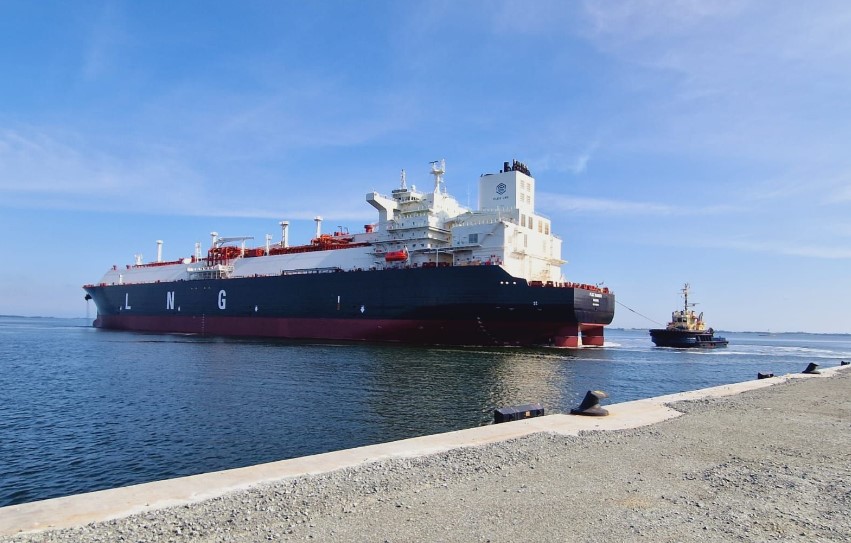Norwegian shipping firm Flex LNG, the owner of 13 liquefied natural gas carriers, reported higher revenue and lower net income in the third quarter compared to the same period last year. The firm expects a further increase in revenue in the fourth quarter.
The shipping firm controlled by billionaire John Fredriksen said on Wednesday that vessel operating revenues were $94.6 million for the July-September period. This marks a rise from $91.3 million in the third quarter last year.
Revenues also rose compared to $86.7 million in the prior quarter.
However, the company’s third-quarter net income of $45.1 million dropped compared to $46.6 million in the same quarter last year but it rose compared to $39 million in the prior quarter.
Average time charter equivalent (TCE) rate was $79,207 per day in the third quarter of 2023, compared to $77,218 per day for the second quarter and $75,941 per day in the third quarter last year.
Flex LNG declared a dividend for the third quarter of $0.875 per share, consisting of a quarterly dividend of $0.75 per share and a special dividend of $0.125 per share.
All LNG carriers back in full operation
Flex LNG has 12 LNG carriers on fixed hire time charters, including to US LNG exporter Cheniere, and one ship, Flex Artemis, on a variable time charter.
In March, Flex LNG completed its refinancing process, boosting the company’s cash position by $382.4 million.
Flex LNG’s backlog for its time charters is for an aggregate of 51 years, which may increase to 77 years with declaration of charterer’s options, it said.
“After successfully completing our drydock program for the year during the second quarter when we temporarily took out three ships for five-year special survey in drydock, we had all 13 LNG carriers back in full operation during the third quarter,” CEO Øystein Kalleklev said.
“Higher vessel availability coupled with a stronger spot market, which positively impacted our single ship on a spot-market linked, variable rate time charter, resulted in quarterly revenues increasing by $7.9 million from $86.7 million in the second quarter to $94.6m in the third quarter,” he said.
Hence, Flex LNG delivered quarterly revenues in the top end of its guidance of $90-95 million, he said.
Revenue to rise
Flex LNG expects its revenue to grow in the fourth quarter of this year.
“With seasonally stronger spot market heading into the winter season, we expect a further increase in revenues in the fourth and last quarter of the year with expected revenues of $97-99 million,” Kalleklev said.
This is also in the high end of the company’s guidance of $90-100 million.
“With the third quarter numbers presented today and the guidance for fourth quarter, we are thus well on track to deliver on our revenue guidance for the year of $370 million, our adjusted Ebitda target of $290-295 million and the overall average time charter equivalent guidance of $80,000 per day,” he said.
“Tighter” shipping market from 2026 onwards
Kalleklev said the overall freight and product market today ahead of the peak winter season is “fairly balanced”.
He said the LNG product market is “well supplied as supply curtailments have recently been limited despite the noise.”
That said, spot LNG prices remain at about $15/MMBtu which still reflects a “tight market” with LNG being priced at premium to crude oil which is somewhat “unusual” in historical context, he said.
“As LNG export growth will continue to be fairly muted the next two years, we do expect the LNG product market to stay tight as European buyers will continue to be buyers both of first and last resort,” Kalleklev said.
The CEO said that active buying by Europeans also means Atlantic cargoes will continue to be pulled towards Europe instead of Asia which will “put a dent” on sailing distances in the near term.
The spot freight market will therefore continue to experience a “very high level of volatility” depending on season.
“From the end of 2025 we do however see a wave of new LNG coming onstream, and we expect these volumes to gradually alleviate market tightness and make LNG affordable to consumers with shallower pockets,” he said.
Consequently, with newbuilding deliveries peaking at end of 2025, “we do see incrementally tighter shipping market from 2026 onwards,” Kalleklev said.
“We therefore think our two fully open ships in 2027 and two fully open ships in 2028 are attractively positioned for re-contracting opportunities,” he said.
“This is particularly the case given the elevated newbuilding prices which have pushed up term rates to very attractive levels for owners of modern fuel-efficient tonnage,” Kalleklev added.

